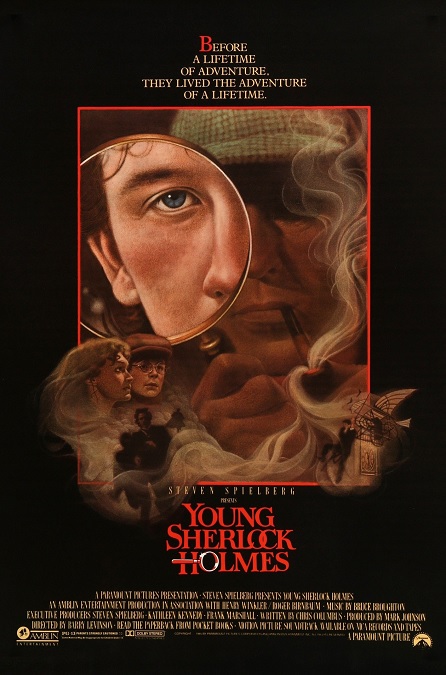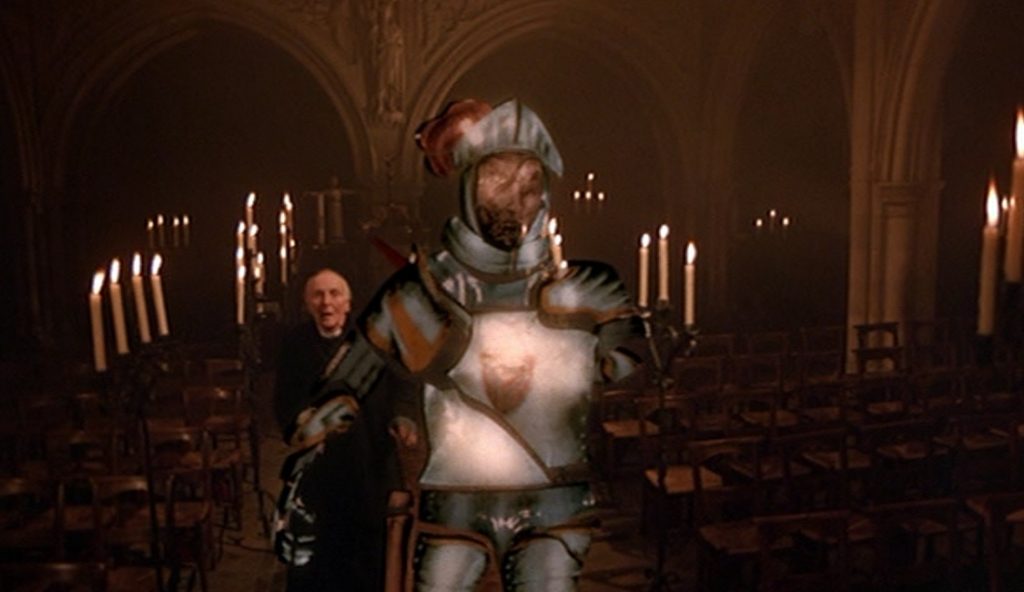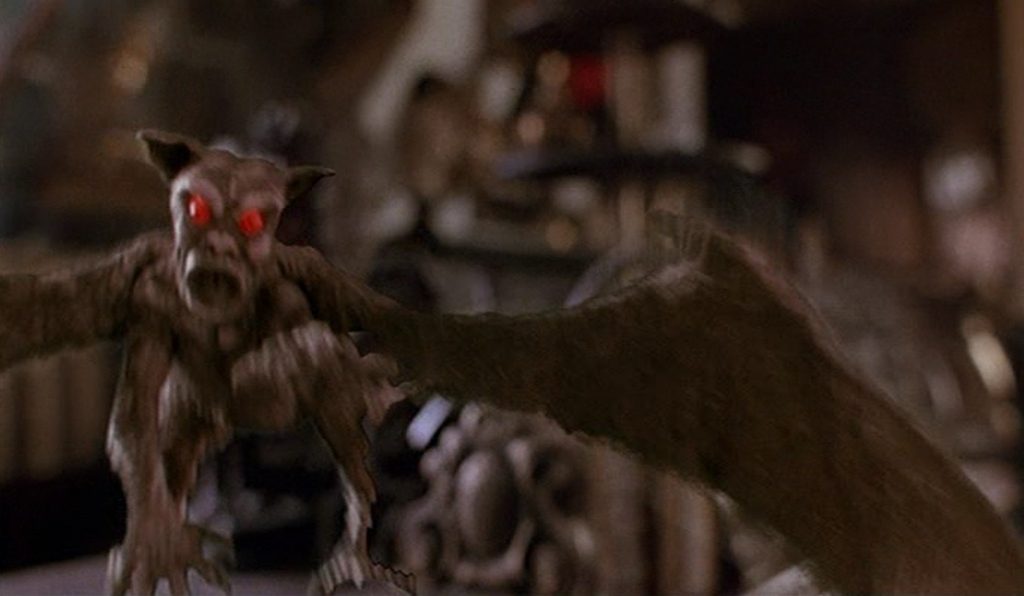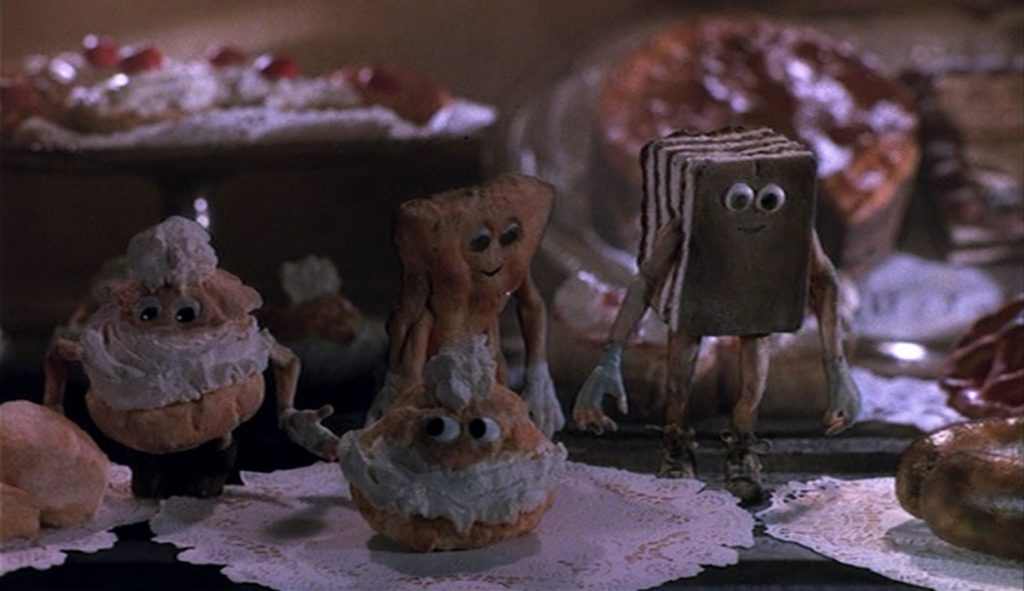



Young Sherlock Holmes – 1985

The movie itself was ultimately campy, but some of the special effects were pretty amazing. Well, actually, they were mostly pretty average, but one effect was incredibly good. It pushed the boundaries of the technologies of the day and gave audiences something they had never seen before.
Good old ILM, or Industrial Light and Magic, did the visual effects for the film, and here is a paraphrase of what their website had to say. “The drug-induced hallucinations allowed ILM to test three technologies for three effects sequences. First was the stop-motion animation-controlled flying harpies, the second was the dancing pastries controlled by rod puppets, and the third was a knight that leapt out of a stained-glass window. To create the stained-glass man, the computer division at Lucasfilm used new motion-blur technology and the first 32-bit RGBA paint system.”
In other words, it was the first completely CGI character ever used in a motion picture. They did something that had never been attempted before, and it worked beautifully. The knight was a walking piece of stained glass, so it didn’t need to look remotely human or even photo-realistic. As such, it was incredibly well done, and I think that it holds up pretty well, even by today’s standards. It looked like a walking, segmented pane of glass. They even paid attention to the detail that, like actual stained-glass images, if you look through the opposite of the glass, the image is reversed.
The ILM website goes on to say, “For the sequence, visual effects supervisor Dennis Muren and Lucasfilm’s Computer Division devoted months of research and development to the seven-foot-tall knight. Final composites, comprised of the CG knight, animated shadows, and a stained-glass window matte painting, were recorded directly to film by a revolutionary laser scanner.”
The stop-motion harpies were pretty good, as were the more practical effects for things like a metal coat rack shaped like a bird’s head that came to life and began shooting little fireballs from its beak, or a roast chicken that came to life and attacked a man. And the DaVinci-like flying machine, while it was a pretty stupid plot point, was executed with a certain amount of skill. Unfortunately, the stop-motion animated pastries looked very cartoonish and silly, making the effect stand out as looking childish ridiculous, especially compared to the relative realism of the rest of the film.
There were a few other effects like some assorted stunts and choreographed fights, a burning wooden Egyptian-style pyramid that crumbled and burned, and a handful of competent matte-paintings. There was really nothing wrong with any of the visual effects, but we have to give the movie proper credit for wowing us with that CGI stained-glass knight! It’s just that there were too many scenes in the film that were campy, tongue-in cheek, or just plain silly to be taken too seriously.